#the behr sisters are competitive
Explore tagged Tumblr posts
Text








let the battles begin
#candy thought she was going to be the only one hosting this years Halloween event at the nightclub#the behr sisters are competitive#but nothing stops joaquin from stealing the spotlight from candy tho#joaquin le chien#candy behr#yuki behr#darling walsh#the sims 4#ts4 gameplay#Spotify
43 notes
·
View notes
Text
Introducing: Candy & Yuki Behr
Candy and Yuki were raised by their dearly departed Grandma Behr.

These sisters are different in many ways -- Candy's a social butterfly ready to DJ your party, and Yuki's a gamer who loves little more than solitude. But that doesn't make them any less close or involved in eachother's lives.

Candy's a true entertainer. She loves to make sure that everyone she cares about is happy and having as much fun as possible. Of course that might often mean DJ sets or dancing the night away together, but she's also known to show up at her friends' houses with coffee for a chill morning.

Yuki doesn't mind school necessarily, in fact she loves learning, it's just she'd rather be gaming or hacking or skiing or nearly any other non-group activity.
While she's a certified loner, Yuki's always ready to make an exception for her sister or her best friend Darling. She and Darling met at a gaming competition. They don't even go to the same school, but they're inseparable on the weekends.

Yuki's offered a million times to get a job, even to drop out of school early. Of course Candy won't hear it. Candy's offered to take a break from her club gigs and look for better paying work. Of course Yuki won't allow that. For now, they're being a bit frugal, and sorta hoping for the best. So far so good!
1 note
·
View note
Link
The practice of choosing a creature to represent each Olympics is now in its 44th year. It’s a job that falls to the host city’s organizing committee, which frequently relies on marketing research to create the mascot and public surveys to choose one, with final approval resting with the International Olympic Committee. While some mascots are human (children, usually), most have been animals (bears, raccoons, owls, etc.) And with the advent of CGI, several mascots have fallen into what’s generously termed the fantasy-creature category.
But whatever the breed of the mascot, most have shared one thing in common: They’re a little—and sometimes very—freaky. ("Loony," to quote Time magazine, or "downright scary" in the appraisal of ESPN.)
But why?
The most obvious explanation is that Olympic mascots are created by a committee—and you know how that too-many-cooks adage goes. Another complication is that an Olympic mascot has to do the double duty of embodying both the idealistic competitive principles of the games while also signifying the unique cultural attributes of the host country and city. It's why we’ve seen a given country’s beloved local creature dressed up in athletic attire and wearing the Olympic rings.
But according to Alan Behr, an intellectual property attorney with the New York firm of Phillips Nizer, the central problem is that Olympic mascots have to resonate with audiences both locally and globally.
“You have to come up with a character that works everywhere, and it can’t have a name that means the wrong thing in some language,” he said. “You need a mascot that will work in both North and South Korea—and in Albania, Cuba and the People’s Republic of China.”
The mandate of piling on multiple layers of symbolism onto a creature that must be clever, appealing and nationalistic without being offensive is a tall order. It means, Behr added, "that you need the lowest common denominator," which frequently results in "fuzzy sweet things that can't offend anybody."
It also means, as the examples here show, some pretty bizarre outcomes.
1 Wenlock – London 2012
Suggestive of a genetic experiment gone terribly wrong, Wenlock was—get ready—a blob of steel (to represent the foundries of Bolton) with a bump on his head (to represent the light on London’s famous taxi cabs) and friendship bracelets on his wrists (to represent the Olympic rings.) And why did Wenlock have just one eye? According to the IOC’s website, “his eye is the lens of a camera, filming everything he sees.” Like, say, terrified children running away as fast as they possibly can.

2 Izzy – Atlanta 1996
After rejecting a peanut, a possum, a peach and a bulldog, the Atlanta organizing committee gave the thumbs up to a cobbled-together "abstract fantasy" creature whose name—Whatizit?—was shortened to just Izzy. Better suited to a local fast-food chain than a global athletic competition, this head-scratching blue mascot roamed the grounds, posed for photos, and prompted embarrassed Atlantans to wonder exactly what the thing was supposed to symbolize about their city. Izzy, said one Atlanta Olympic Committee official, “has been a noble and gentle representative of our games.” But many disagreed, referring to Izzy as the “blue maggot” instead. Opined the Washington Post: “That mouth looks like the gateway to cartoon hell.”

3 Sam the Eagle – Los Angeles 1984
Drawn by Disney artist Robert C. Moore, Sam the Eagle looked a bit too plump to take to the skies, let alone run the 400-meter. And while a bald eagle would have been plenty to symbolize the United States all by itself, Disney decided to dress him up in Uncle Sam attire—bow tie and top hat—just for good measure. According to the definitive Disney blog Mouseplanet, a team of 30 Disney artists had also toyed with buffalo, snakes and turtles (rejected for being too slow) and a bear (rejected because the Moscow Olympics had used Misha the Bear in 1980.) So they settled on Sam—a character that internal memoranda confirmed had a “bulbous middle section.”

4 Magique – Albertville 1992
After a mountain goat named Chamois got fired as Albertville’s Olympic mascot, this strange five-pointed creature named Magique got the job. On a thematic level, he worked well enough, wearing a snowsuit and the French national colors. But what did a tiny, five-pointed man have to do with the winter sports? And what was he, anyway? Variously called a “show imp” and a “mountain elf,” Magique was actually a “little imp” according to the IOC—which explained him no further. But if he confused attendees, Magique proved more useful as part of a computer teaching program taken by the games’ 7,924 volunteers.
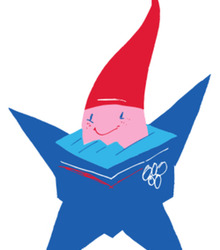
5 The Fuwa – Beijing, 2008
Ready? Let’s see if you can keep up with this. “Bei jing huan ying ni” means “Welcome to Beijing.” Now, take each word and double the syllables to get Beibei, Jingjing, Yingying, Nini and Huanhuan. Next, apply each name, respectively, to a fish (to symbolize water), a panda (to represent the forest), an antelope (to symbolize the earth), and to sky and fire. And what do you get? The Fuwa, five “good luck dolls” that were possibly the most confusing mashup of Olympic mascots in history. Created for the Beijing Olympics in 2008, these characters were actually the winners in a global contest that garnered over 3,000 submissions. Unfortunately, after an earthquake, floods and mudslides struck China in the weeks before the opening ceremonies, many Chinese citizens blamed the “Curse of the Fuwa,” contending that there was no good luck in any of them. Meanwhile, the rest of the world wondered if the Fuwa were children, animals or space aliens.
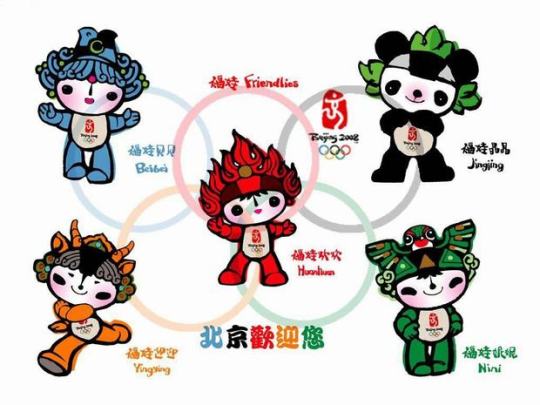
6 Amik – Montreal 1976
Beaver pelts were central to the development of Canada in the 17th century, so when Montreal was chosen to host the 1976 Summer Olympics, it made sense to go with a beaver mascot. Not only was the creature already on coins and stamps, the beaver’s traits of patience and hard work fit nicely into the Olympic ideal. The problem wasn’t the beaver as such, however, but with the minimalist rendering. Stripped of its legs, ears and face, Amik (the word for beaver in the native Algonquin language) looked a lot like a poop.
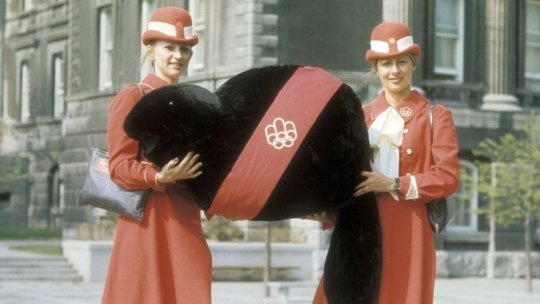
7 Heidi and Howdy – Calgary 1988
When the IOC selected Calgary to host the 1988 Winter Olympics, the Calgary Zoo took on the task of choosing a mascot. Seven thousand Canadians submitted suggestions and, believe it or not, these brother-and-sister bears were the best of the lot. Dressed up as cowboys, the bug-eyed Heidi and Howdy wore expressions that suggested a mild form of psychosis. But they were harmless. After all, what’s to fear from two polar bears whose names derive from “Hi” and “How do you do?"
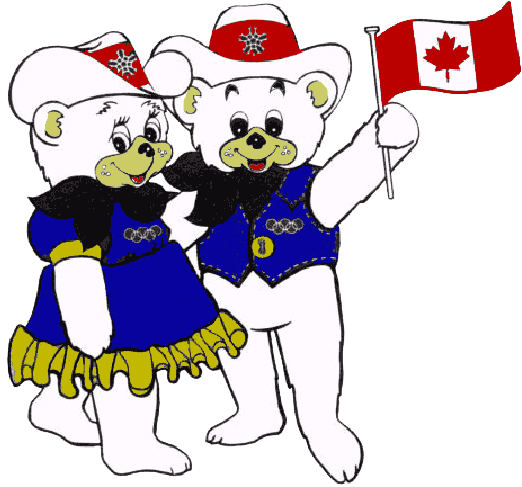
8 Schuss – Grenoble 1968
When a nervy skier heads straight downhill, it’s called a Schuss. In 1968, Schuss struck the good people of Grenoble, France, as a good name for this mascot. While he was sold as a souvenir at the games, Schuss wasn’t an official mascot. He did, uh, birth the idea of Olympic mascots—which the IOC enshrined in 1972 when a striped dachshund named Waldy became the official mascot for the Summer Olympics in Munich. Regrettably, many attendees didn't take to the name Schuss, and called him "The Skiing Sperm" instead.
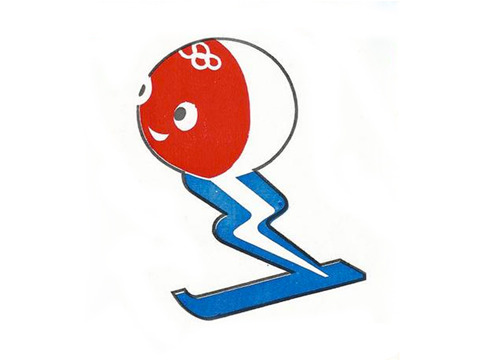
Under the cut for some more of my favorite weird olympic mascots.
Rio de Janeiro 2016
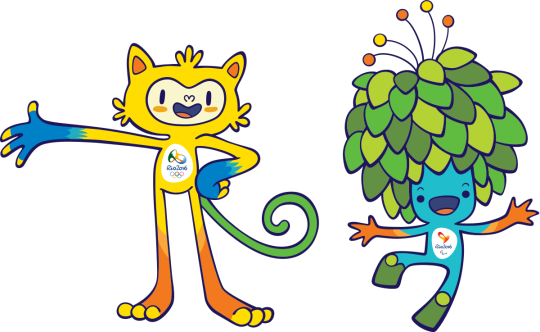
Torino 2006
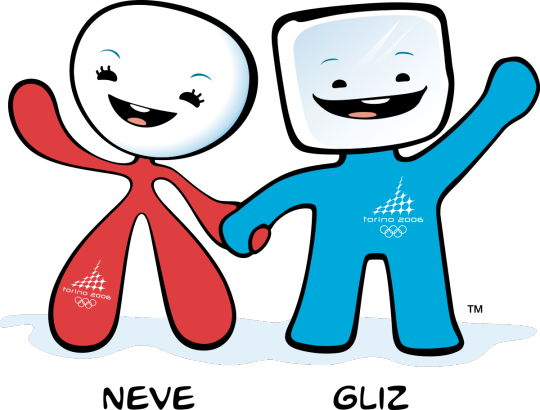
Athens 2004
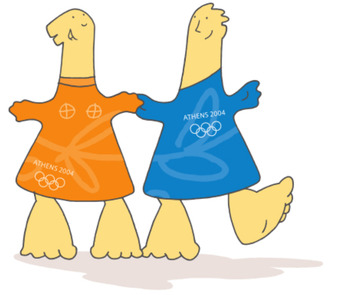
Sydney 2000

Nagano 1998
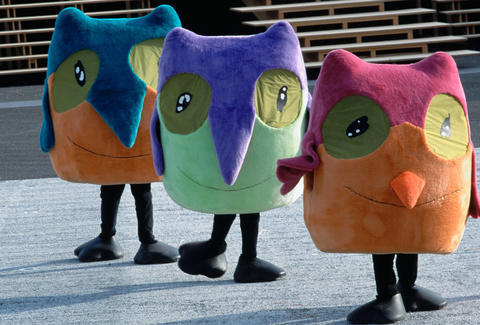
Lillehammer 1994

Sarajevo 1984

Lake Placid 1980
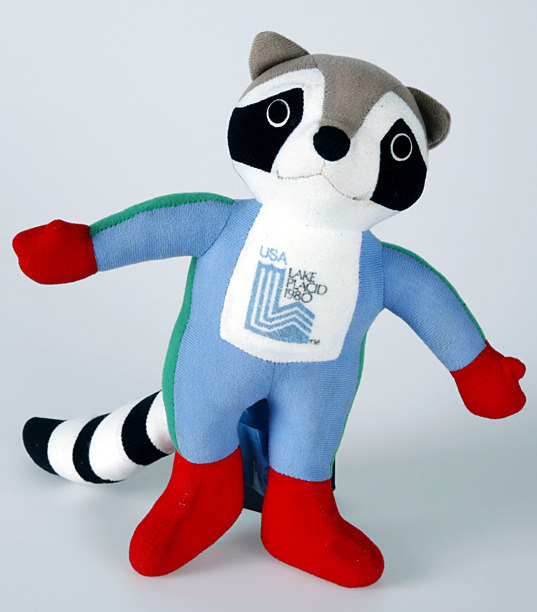
1976 Innsbrook

7 notes
·
View notes